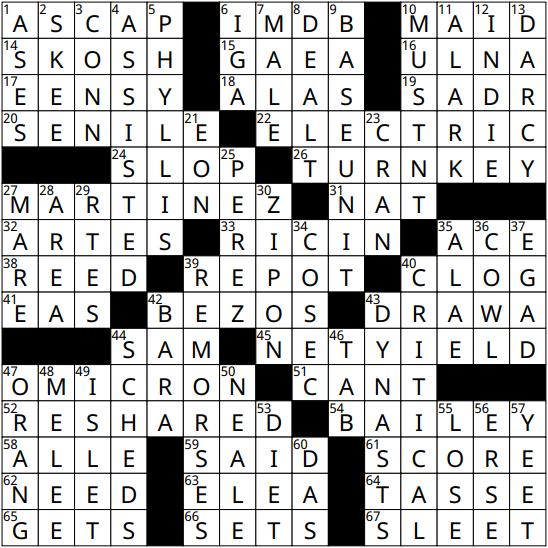




Dorothy McCabe is Waterloo’s next mayor. McCabe beat runner-up Shannon Weber by a narrow margin of just 1.51 per cent, receiving 43.53 per cent of the vote. Overall voter turnout in the city was 27.18 per cent. Ward 6, the ward the university is in, will be represented by UW alum Mary Lou Roe, who received 32.21 per cent of the vote. There was no incumbent running in either race.
McCabe previously served as the chief of staf to the mayor of Kitchener in 2010 and was the government relations manager for the Town of Milton until earlier this year.
She said, “It feels amazing [to win]. Community-based work is what I’m passionate about. I feel like I’m a little bit in shock still, but this is the type of work that I’m really passionate about.”
Talking about her victory, Roe said, “It is incredibly humbling, and it’s exciting, and I’m so honored that the residents of Ward 6 have put their faith in me. It’s just been such an awesome experience to meet so many community members and to listen to their stories and perspectives, and it’s given me such a great opportunity to connect with so many parts of the city [...] I’m just inspired by the people and the community.”
Roe added, “I think [McCabe]’s a very qualifed person to be mayor, and I’m very excited to work with her.”
McCabe said one of her main priorities is to address the housing crisis.
“One of the frst things I want to talk to the new council about is about a new affordable housing development. [...] We are in a crisis, and we know there’s people who need safe places to live. So whether it’s supportive or afordable housing, that’s one of the frst things that I want to talk to council about, to see if we can keep a piece of land and work with a nonproft developer to start to build something as quickly as we can.”
McCabe recognized the importance of the student voice in Waterloo.
“The two universities and the college [University of Waterloo, Wilfrid Laurier University, and Conestoga College] are huge and important economic contributors to Waterloo [and] contribute to the overall vibrancy. So I look forward to working with the presidents of those three institutions as well as their teams and certainly with

student leaders to make sure that we’re collectively really working together to unlock the potential of Waterloo,” she said. “I think we also need to talk to students about things more than just the St. Patrick’s Day party. We need to talk to them about fxing some of the transit challenges that we have, inter-regional challenges — getting some from Waterloo to the GTA or wherever they’re coming from.”
McCabe added that she wants to talk to students and fgure out what the city should do to encourage them to stay in the city afer getting their degrees and diplomas.
Roe also expressed excitement about representing students. “I’m really excited to represent the students because they’re such a big part of the ward, and I think it’s really important to strengthen the relationship between the students and city hall that matters to me, and so, I’m really excited to start that journey.”
When asked what her immediate goals are, Roe said that she intends to listen and learn. “I’m going to listen to the residents. I’m going to learn what’s important to them, and also what the processes are at the city so that I can most efectively [...] represent the
constituents of Ward 6 [...] so that they feel visible and heard and really work on being the bridge between the city residents and city hall so that people feel that they’re part of the community and that they’re part of the decisions here.”
Matthew Schwarze, a fourth-year UW mathematics student, was the runner up in the Ward 6 race. He received 28.72 per cent of the vote.
“I knocked on over 5,000 doors and chatted with hundreds of residents of every background in the world. It was great to get to know them and sort of what their issues were. The biggest thing that I found was that everybody’s facing a lot of the same issues right now. Sometimes there’s diferent angles to it like, you know in housing afordability. Some people [are] concerned about being able to aford a place when they retire or kids afording a place or concerned about people in the city who don’t have housing at all.”
Schwarze expressed his confdence in the winning candidates. “I think they’re both [McCabe and Roe] going to do a great job. They both also got [out] there in the community chatting with people, and we ac-
tually had very similar issues that we were concerned about [...] so I’m really excited to see what they come up with.”
All results are unofcial until certifed by the city clerk.
Mayor - Dorothy McCabe
City Council Ward 1 - Sandra Hanmer
City Council Ward 2 - Royce Bodaly
City Council Ward 3 - Hans Roach
City Council Ward 4 - Dianne Freeman
City Council Ward 5 - Jen Vasic
City Council Ward 6 - Mary Lou Roe
City Council Ward 7 - Julie Wright
Regional Chair - Karen Redman
Regional Councillors - Jim Erb and Chantal Huinink
Waterloo Region District School Board
Trustees - Scott Piatkowski, Kathleen Woodcock and Marie Snyder
Waterloo Catholic District School Board
Trustees - Linda Cuf and Sally Fuentes
Viamonde School Board - Joseph Vandermeer
MonAvenir Catholic School Board - Dorothée Petit-Pas
n Oct. 19, the University of Waterloo’s Ofce of the Registrar sent out a memo stating that UW’s self-declaration policy will now include an option to self-declare a short-term absence.
This option is limited to undergraduate students, and students will use Quest’s Student Absence Declaration page to indicate the absence, which is defned as a maximum of 48 hours, during which they are exempt from any assessments. Students may take the absence for any reason and are not required to disclose the reason or provide documentation as was previously necessary. The absence can be used once per term, during formal lecture periods. Several students praised the update for its leniency.
“As it is, it’s a very big improvement over previous [policies],” said Raymond Li, a third-year computer science student.
During the spring term, the university’s policy regarding COVID-19-related absences required students to complete a similar self-declaration form in Quest and contact their professor before or within 48 hours of the assessment due date. The university’s current policy regarding other medical causes for absence requires students to fll out a University of Waterloo Verifcation of Illness (VIF) form within 48 hours of an assessment due date to receive accommodation. However, health practitioners may charge a fee for completion of the VIF, challenging the accessibility of the policy in some students’ eyes.
Li described an incident during winter where despite coming down with stomach pains, he had to physically go to the doctor’s ofce to obtain a doctor’s note, which cost him $25, to get accommodations for assignments. “Now, I can stay home and rest and self-declare, and not have to pay $25, so I think [the self-declaration]’s a great idea,” he said.
Olivia Cote, a second-year kinesiology student, also approved of the update. “At the end of the day, we all want to get through our programs, but we do also have to take care of ourselves and other people, so if there are reasons we need to take time away from classes, I think it’s reasonable,” she said.
Cote appreciated not having to disclose her reasons behind taking time away from class. “Sometimes things are a little personal and I don’t really feel like everyone [needs to] know what’s going on,” she said.
Though professors are not currently required to accommodate students who cannot come to campus, both Li and Cote were confdent in their professors’ ability to ac-

commodate the new policy.
“I don’t see how [professors] would be non-accommodating for [the new policy],” Li said. “For most of my courses, I’ve seen profs outline specifc policies for if you miss a midterm because of VIF, they can just apply the same policy for self-declared absences.”
Cote also trusted that professors would work with their classes and students to make accommodations, but stated that the current policy could be expanded. “Forty-eight hours sounds like a good plan but
at the same time, things happen out of nowhere…obviously it depends on the situation, but I think it should be expanded a little bit,” she said.
The current advice for those who test positive for COVID-19 on the region of Waterloo’s website is to isolate until symptoms have been improving for at least 24 hours straight, or 48 hours with nausea, vomiting, or diarrhea. Those who test positive but are asymptomatic, are not required to self-isolate unless symptoms develop.
Chris Li, a first-year kinesiology student, was also pointed out the benefits of the short-term absence not requiring formal documentation, as it can sometimes cost money. However, he was hesitant about a potential expansion of the policy, saying, “I don’t think [expansion] is a good thing because then people are going to start taking advantage of it, right?…If they give you more than one, you’re gonna start taking advantage of it, and that’s not fair for other people.”

write for science and tech Got an interesting science or tech story you want to write about? Email science@uwimprint.ca
Sustainable Futures, a new initiative aimed at benefting the environment, economy and society at large, was recently launched by the University of Waterloo. This initiative is a collaboration between the Waterloo Climate Institute, the Waterloo Institute for Sustainable Energy, and the Water Institute.
It aims to achieve the United Nations Sustainable Development Goals with a holistic approach of not only focusing on energy, climate and water but also the interconnections between them. More than 100 of Waterloo’s key collaborators, including government, industry partners, community organizations, researchers and students celebrated the launch of the Sustainable Futures initiative on Sept. 19, 2022.
This initiative also aligns closely with the Futures Framework under Waterloo at 100 — an aspiration of Waterloo’s achievement at its 100th anniversary in 2057. The Futures Framework coordinates and recognizes UW’s efforts in addressing global challenges through education, research, and innovation.
The Futures Framework, which helps coordinate the university’s eforts in education, research, and innovation to address global challenges, played an instrumental role in launching the Sustainable Futures Initiative
. Charmaine B. Dean, vice-president of research and international at UW, advocates for sustainable solutions linkining climate, water, energy, driven by global challenges such as extreme weather events, food insecurity, and poverty.
Vivek Goel, president and vice-chancellor of UW, has said that Sustainable Futures is not only part of Waterloo’s sustainability ecosystem, but also an emerging culture of environmental action and activism in the neighboring region. The collective eforts of world-class scholars, students, professors, and faculty will catalyze innovation and sustainable thinking in Ontario, Canada, and the world.
Along with the launch of the initiative, UW’s School of Environment, Resources and Sustainability launched the Sustainable Futures Mentorship Program. Virtual sessions on the last Wednesday of every month, joined in by a guest speaker, ofer more information on the program. The program’s goal is to support students in their academic careers



by sharing insights and advice from their colleagues, environmental practitioners, and industry professionals. Sessions are open to all UW students and will cover an array of topics including co-op placements, graduate school opportunities, securing entry-level jobs, and career options. Additionally, sessions will present skills and practices to support mental health.
UW’s faculty of environment ofers a wide array of sustainability courses which employ the use of insights from the natural and social sciences to help solve some of the world’s biggest environmental and sustainability challenges.
From green technology to ecological consulting, the program prepares students for all global challenges and equips them with the necessary technical tools to work in the industry.
An example of a unique environmental major ofered is the bachelor of sustainability and fnancial management which uses knowledge of accounting and fnancial management from UW’s school of accounting and fnance with the faculty of environment’s expertise in sustainability to create industry-ready and global citizens.
Four years ago the Sustainable Development Solutions Network Canada ofcially launched at UW. The two day event brought together 700 participants to talk about Canada’s challenges and opportunities in progressing the Sustainable Development Goals (SDGs).
The four main SDGs were covered at the launch event — education and training for sustainability, sustainable and inclusive cities, Canada’s energy-climate nexus, and doing justice to life on land and below water.
In March, 2022, UW held its frst Worldwide Teach-in aimed at climate justice. The Worldwide Teach-in on climate justice aimed to recruit 1,000 schools and universities around the globe to engage 500,000 students in learning about climate change and climate justice. This Teachin was led by the UW Institute for Sustainable Energy and was supported by several student partners and the Interdisciplinary Centre on Climate Change.
In May and June UW also held a summer school event aimed at climate change and water security in urbanized watersheds. This program ofered participants talks and discussion on leading water and climate struggles.
Both of these initiatives aligned with the SDGs and despite the world being stopped because of the pandemic, the institute upheld its trajectory in terms of achieving goals.

write for arts and life
Imprintis looking for arts writers! For more information, email arts@uwimprint.ca.

judge is actually looking for is one of the most efective ways of putting your best foot forward.
When I frst started entering writing contests as a freshman in high school, I was swifly alarmed — and thoroughly humbled — by the sheer number of rejection slips I was receiving. I worried that I was simply not skilled enough to be competitive in my craf. Still, I was determined to prove myself. I kept writing.
Afer two whole years of what felt like endless drafing, fne-tuning and entering, I fnally won my frst contest. Soon followed the next win. And the next. Eventually, I was consistently ranking in contests by The New York Times, the Scholastic Art & Writing Awards, Youth Journalism International and other competitive organizations. These recognitions are ones that have set me apart during job interviews, helped pay for my tuition and provided me with hard-earned recognition for my craf.
I don’t say this to brag (rest assured that I still face my fair share of rejections now), but rather to stress that there are surefre ways of maximizing your shot at getting a contest judge’s attention. So whether you write prose or poetry, articles or screenplays, keep reading for a foolproof guide on how to win the writing competition you have your eye on.
Think like a contest judge
For a contest judge, what distinguishes two equally good short stories from one another?
The answer is simple: whichever one fts better with the publication as a whole.
Sometimes, it’s not enough to write an excellent short story because “excellence” is determined by the publication at hand. Some contests lend heavy preference to fctional stories while others prioritize non-fction. To make things easier for yourself, deliberately select contests that are most in tune with what you like to write. Afer making a list of contests you’re interested in, read the entries of past winners and discover what ties them together. Do they share a certain voice or style? Does their writing style lean toward conversational or formal? If possible, fnd their publication’s style guide to know which citation style and spellings to use and if there isn’t one, gauge what rules are consistent among the winning entries. If you’re especially neurotic (defnitely not speaking from personal experience), try comparing the frst place entries with the second place ones: is there anything notably diferent between the two?
Ultimately, knowing what each contest
(Actually) read the guidelines
First, you want to make sure you understand the contest guidelines inside and out. This might seem self-evident, but the easiest way to score yourself a rejection in two seconds is by picking the wrong font size or entering a docx fle when they specifcally requested a pdf. Any explicit criteria is non-negotiable: if a contest says the word count maximum is 500 words, adhere to that. (No, bending the rules won’t make you stand out.) If a rule seems ambiguous or unclear, don’t brush it of and email the listed contact for clarifcation. This is especially crucial to do when it comes to a contest’s rights policy because if you do end up placing in the contest or even winning, certain companies will retain exclusive rights to your piece, thereby making it ineligible for publication elsewhere. Read the fne print and know what you’re getting into.
Know what sets you apart
It’s crucial to understand that no two writers are the same — not in worldview, not in style. Judges don’t want a regurgitation of stories they’ve already read before, so if there’s anything that sets you apart from the crowd, hone in on this.
For me, I’ve had contest judges comment on my methodical, hyper-specifc approach to criticism, so now I consciously look for ways to embed this in my reviews.
What lived experience have you had that
no one else can speak of? What trope can you subvert in a way that’s interesting to read?
You might be thinking, “But I thought I was supposed to give the judge exactly what they want?”
Again, think like a judge: in a pile of hundreds of entries, wouldn’t you want to come across a piece you would enjoy reading? So strike a healthy balance by making sure your writing slots in well with the overall tone of the publication while still leaving room for genuine originality. Take calculated creative risks and experiment with form. Find your real voice and not just what you think your voice should sound like. You can’t predict what other readers will want, so your best bet is to write the story you would want to read and make any alterations from there.
Revise, revise, revise
From my experience, the most efective editing method is to only edit afer having had ample time to distance myself from my writing. Ofen, if I try to edit straight afer writing, I’m too attached to see my work through an objective enough lens to make the necessary adjustments. Read your work out loud since the ear can catch mistakes that the eye alone can’t, such as pacing issues and unnatural dialogue. Another strategy I employ is reading each sentence individually from the bottom of the page to the top; this ensures that each sentence makes sense on its own.
Additionally, it never hurts to get a wellread friend or trusted professor to proofread your work and ofer their unique perspective. I once FaceTimed a friend who’s a philoso-

phy whiz for feedback on a character-driven scene I was struggling with. The second the call ended, I rewrote the entire scene because she helped me view the interaction at hand through a completely new lens.
So welcome criticism with grace and a grain of salt. Your gut feeling will ofen intrinsically know what’s right for the work and steer you in the right direction.
Enter in bulk — but be realistic
To maximize your chances at winning, enter as many contests as possible while still remaining practical. As university students, we only have so much time to devote to writing in our spare time between studying, work and other commitments. Not to mention that with the likelihood of entry fees, the idea of entering contest afer contest is not only unrealistic but unappealing.
Luckily, I’ve learned ways to save time and money — all while maximizing entries.
To save time: re-use submissions. As a rule of thumb, enter contests that allow for simultaneous submissions, which means that writers are permitted to enter the same piece across multiple diferent contests (simultaneous submission policies are generally listed under contest guidelines). Having two or three high-quality pieces to enter into multiple contests is usually wiser than shopping around ten rushed, mediocre ones. Even if you try to repeatedly edit a single piece to cater to each contest, you’re still saving yourself time in the long-run.
To save money: I highly encourage students who are new to writing to test the waters with free writing contests from smaller publications. Usually this means less entries, less competition and in turn, less fnancial pressure as you grow your skills. However, if there’s a larger contest you’re interested in with a fee you can’t shoulder, don’t immediately be discouraged. Many quality contests like Youth Journalism International and the Adroit Prizes will happily ofer fee waivers to remove barriers of entry if you provide proof of fnancial difculty. And if you’re unsure, again, there’s no harm in reaching out to ask.
Keep pushing forward
No matter how seasoned of a writer you are, rejection is more or less a foregone conclusion. Once you hand in a contest entry, let it be and start writing the next piece. Much of writing is, admittedly, subjective. Since we can’t control how other readers respond to it, the best thing we can do is nail down the technical parts and keep practicing. So grab your computer or a trusted notebook and start writing — and entering!
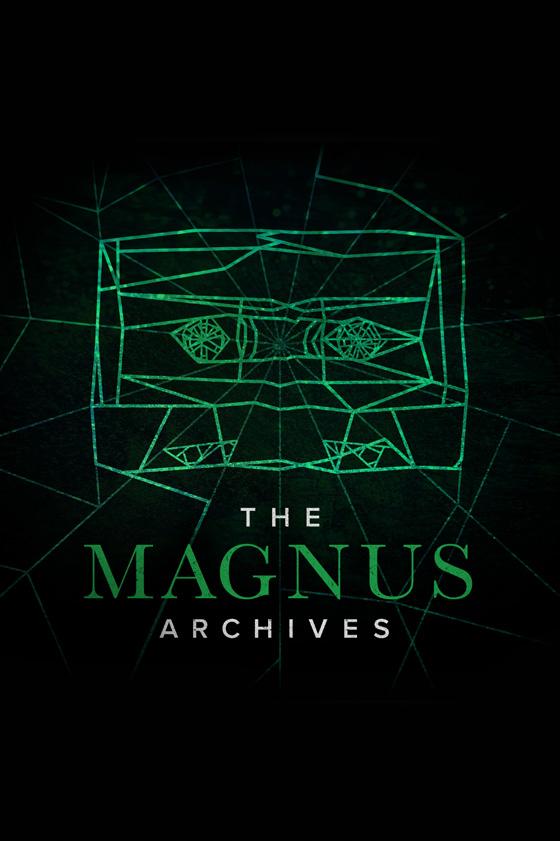

The Magnus Archives (2016 – present)
The Magnus Archives is a horror podcast in which there is a place called The Magnus Institute — an archive dedicated to recording frsthand accounts of the paranormal. The show focuses on the new head archivist, Jonathan Sims, who is replacing the former archivist afer her mysterious death. However, as he sorts through the archives, the records (called ‘statements’) begin to show connections. The horror anthology format of the show transitions into a grand overarching narrative, and it appears that there is a lot more in this world than mournful ghosts and monsters under the bed. The podcast blends psychological horror and body horror — it’s bookish, suspenseful and thrilling, featuring a slow-burn romance and a full cast of complicated, tragic, loveable characters. It is 200-episodes long, but if you have time to spare in between classes, it is perfect for getting into the spooky mood. — Remy Leigh, Arts and Life Editor
Punisher (2020)
Singer-songwriter Phoebe Bridgers’ sophomore studio album quietly thrums with haunted imagery. From the ghostly, guitar-pluck flled opener “DVD Menu” to the proverbial skeletons of a toxic relationship made literal on “Savior Complex,” Bridgers isn’t afraid to delve into the spooky — in fact, she embraces it.
Whether embarking on a lonely trip to Memphis on “Graceland Too,’’ or stepping foot into random drug stores on the Eastside of LA on title track “Punisher,” Bridgers embodies a series of isolated images that once spliced together, crescendo into an emotional outpouring of sound, mood and noise. This trend is most apparent on the album’s sprawling fnale, “I Know the End,” in which Bridgers’ hometown of LA gradually succumbs to an Armageddon-esque nightmare akin to, as Bridgers sings, “a government drone or an alien spaceship.” There’s even a point where she begins to repeatedly scream, creating a result that is equal parts impressive and alarming. Between all the horror

and heartache, there is riotous fun to be had on tracks like “Halloween,” where Bridgers jokes about living in a hospital: “The sirens go all night / I used to joke if they woke you up / Somebody better be dying.”
— Nadia Khan, Assistant Arts & Life Editor
Sweeney Todd: The Demon Barber of Fleet Street (2007)
A Victorian slasher musical — is there anything better? Based on the 19th-century newspaper serial A String of Pearls, director of the macabre Tim Burton brings the legend of demon barber Sweeney Todd to life in this 2007 musical.
Set in Victorian London, the flm tells the story of Benjamin Barker (Johnny Depp), wrongfully imprisoned by the corrupt Judge Turpin (Alan Rickman), who covets his wife. Afer 15 years in prison, Barker returns to Fleet Street to seek revenge. Here he meets Mrs. Lovett (Helena Bonham Carter), the owner of a meat pie shop, who informs him that his wife has been murdered and his daughter remains with Turpin. Barker assumes the alias of Sweeney Todd and opens a barber shop above Mrs. Lovett’s store, where he beckons his unassuming enemies for a shave. It isn’t long before business is booming, and Mrs. Lovett’s pies are fying of the shelves, given a boost by a new secret ingredient.
The story of Sweeney Todd is rooted in folklore dating back to the 14th century, but historians have long debated whether the nefarious barber actually existed. More likely, the story was embellished and fctionalized to please the appetites of the Victorian public, who salivated over any gruesome tale.
Whether truth or fction, Burton’s rendering of the story is sure to please fans of musical theater or Victorian gothic.
How about a shave?
– Meagan Leonard, Executive Editor
Perfect Blue (1997)
One of the few flms I’ve watched that remains genuinely unsettling years later. If anything, the flm’s subject matter has become more relevant over time, which is im-
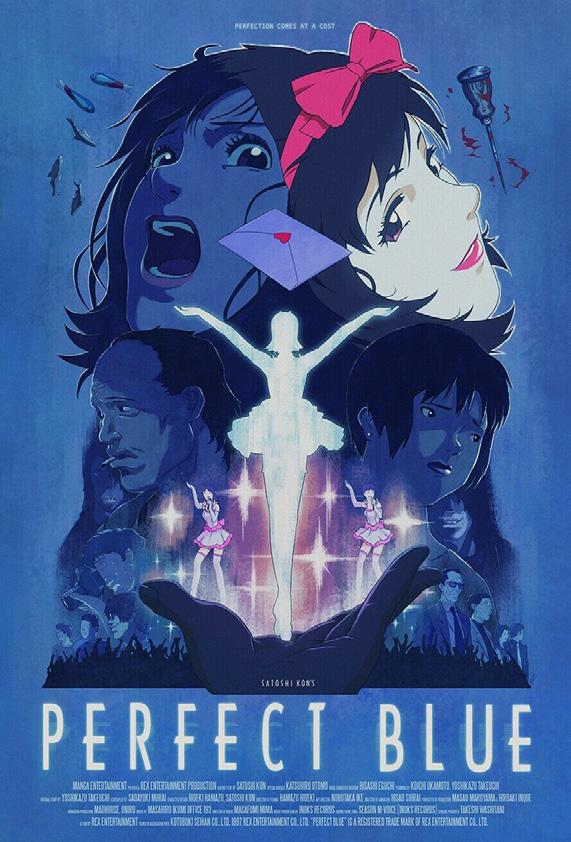
pressive given it was made at a time when the Internet hadn’t yet become the all-consuming force it is nowadays. I don’t want to spoil too much since the mystery element is a big part of the flm’s appeal, and I really think the experience is at its best when you jump in blind. However, I do have to leave a content warning since the flm deals with heavy subject matter around mental health and sexual assault. But if you’re down for it, I think this is a flm you won’t regret watching.
— Eduardo Matzumiya, Head Copy Editor
Welcome to Nightvale (2012 – present)
For those who aren’t exactly ones for horror movies or media (like myself), I would still advise delving into the mysterious and unnerving if you’re hoping to get into the Halloween spirit. And for that I can think of no better piece of media than Welcome to Nightvale, a podcast that describes the daily goings-on of Nightvale, the titular town. Upon frst listen, it sounds like your average small-town radio station. However, events like the opening of a new dog park that citizens are strongly advised against visiting due to the Hooded Figures rumoured to lurk there, or the opening of the Nightvale Harbour and Waterfront Recreational Area despite a complete lack of water, draw listeners in with just enough mystery to be unsettling and the slightest sense of comedy at the impossible nature of it all.
— Alicia Wang, Editorial Assistant
Jeepers Creepers 2 (2003)
I went for a sleepover at my best friend’s house at the age of nine, not exactly knowing what I was getting myself into. Supposedly he was in the midst of a phase of fxation with horror movies. I, a young innocent child who had never seen anything of the sort, was taken aback when the scarecrow demon began his revenge on humanity in the very frst scene of this cult classic. Ok, it is not exactly a classic, and at the age of 22 I am not as scared to watch it today. The movie has a certain charm to it — if you are not scared by it, you will at least get a laugh

out of its appeal to horror archetypes and themes. Though I will note that to this day, seeing the demon’s face pop up in the bus window gives me chills.
— Charlie Dickson, Opinions Editor
A Nightmare on Elm Street (2010) I remember this being one of the frst scary movies I’ve ever watched as a child and it completely petrifed me. This movie lef me unable to sleep for a good week. The thought of there being an entity named Freddy Krueger slashing teenagers in Ohio was enough to convince me that I shouldn’t go to sleep. Despite my trauma, this movie’s a classic, revolving around Freddy Krueger — a supernatural slasher haunting the dreams of teenagers living on one street. Like all good scary movies, this flm also had a really great ending where despite burning in a house, Freddy manages to survive and reappear. If you’re in the mood of rekindling old emotions derived from horror movies, this one’s a must-see.
— Khalid Safdar, Assistant Science & Tech Editor
Smile (2022)
Afer witnessing the traumatic death of a patient at work, psychiatrist Rose Cotter begins experiencing similar creepy visions as the patient had described, yet no one else can see. As the movie progresses, she gets more and more distressed as she gets closer to fnding out the cause of this curse. I usually shy away from horror movies, but I’m glad I went to see Smile in theatres. It’s an unsettling but sometimes funny movie flled with jumpscares, some of which are silly and will make you scream in surprise but laugh right afer.
Smile is all about the traumatizing cycle, as the character exemplifes how it can spread to those who see others go through the same thing. If you are jumpy or get scared easily, watch it at your own risk because it made me scream in some scenes. Now then, do you feel like smiling?
— Jia Chen, Head Designer & Mahnoor Irfan, Assistant Head Designer







With over 30 varsity teams, the University of Waterloo has many student-athletes who must balance rigorous academic schedules with the demands of playing elite sports. But what does the lifestyle of a varsity athlete actually look like?
Ofen, the Warrior lifestyle requires early mornings. Athletes on the swim team, rowing team, soccer team and many others attend practices before class several times a week. “I get up at 4:15 a.m. on weekdays so I can get ready for the day, and drive to practice for 5:30,” said Robert Walsh, a varsity rower and second-year mechanical engineering student.
Devon Miller-Junk, a ffh-year computer engineering student and one of the captains of the men’s varsity swim team, wakes up at around 5:00 a.m. most days for 5:45 a.m. practices.
Given how early many practices run, athletes can fnd themselves short on sleep. “The biggest sacrifce I make as a varsity athlete is probably my sleep,” Walsh said. “Some of my classes can be difcult when I’m really tired, but it’s defnitely worth the satisfaction of an early morning row.”
However, not every sport requires its team members to be early birds. Lauren Jutlah, a third-year tennis player, does not have morning practices.
Regardless of how early or late practices run, the varsity athlete schedule requires signifcant time commitment. Between team practices, ftness training and games, many Warriors spend upwards of 15 hours a week on their sport.
“The hardest part about being a varsity athlete is trying to balance the time commitment of training and competing with school work. Making sure you are on top of assignments and ready for class can be tough when you’re tired from an early morning practice or stressed about an upcoming regatta,” Walsh said.
“I spend about 18 to 21 hours per week on rowing, with two hours a day dedicated to practice at the boathouse, one hour per day dedicated to commuting, and about three one-hour weights or conditioning sessions per week. We also have a regatta about every other week during the on-season, which takes about 10 to 12 hours of the weekend,” Walsh explained.
Miller-Junk expressed the same sentiment. “It’s challenging to balance your responsibilities and commitments within the
sport and outside the sport. It can be really easy to lose sleep or your diet when pressed for time,” he said. “It varies by term, but I try to dedicate around 18 hours per week for training during our season, and 12 to 15 [hours per week] during the of-season. This
is usually 80 per cent in the water during the season, and 50 to 60 per cent in the water during the of-season.”
During the soccer season, the team practices for eight hours a week, on top of which athletes complete three to four hours of ft-

“The hardest part about being a varsity athlete is trying to balance the time commitment of training and competing with school work.”
ROBERT WALSH A VARSITY
ness training. Games add an additional fve to eight hours to the weekly schedule.
Jutlah, who spends between eight and 12 hours a week at tennis practices and six hours a week at games during the season, said that the biggest sacrifce she makes as an athlete is personal time. Between training and a busy academic schedule, it can be challenging to fnd time for self care and a social life.
In addition to the time demands of training, Miller-Junk highlighted the importance of recovery time — including enough sleep — between practices, further emphasizing the need for varsity athletes to have strong time-management skills. Many athletes also manage their diets closely.
“The biggest problem with most swimming diets is getting enough food at the right time,” Miller-Junk said. “You want protein-heavy meals very soon afer training, with smaller cutting back [in how much you eat] soon before competition,” he explained.
Competitive swimmers ofen follow a taper training schedule, which involves reducing the volume and intensity of practices in the days leading up to a competition. Tapering allows swimmers to recover and reserve energy before a big swim meet. During this period, swimmers may reduce their overall food intake — to match the reduction in caloric expenditure — and increase consumption of carbohydrates. Even athletes with less strict diets need to monitor their food and water intake to keep themselves in top shape.
“I don’t really tend to have a specifc diet, but I defnitely like to meal prep. Having my lunch for the next day prepared the night before makes it easy to just grab and go when I leave my house in the early mornings,” Walsh said. “I also like to eat a bunch of small meals throughout the day, rather than a few big ones. I fnd having two breakfasts, and two lunches helps to keep me better fueled through the day, rather than having one of each.”
Every athlete emphasized the importance of hydration. “The most important thing is getting enough water,” Jutlah said.
Despite the challenges associated with a varsity athlete schedule, the rewards overwhelmingly outweigh the sacrifces. “My favourite thing about being a varsity athlete is the opportunity to compete with other schools, and see how much I can improve. It’s really satisfying to set goals, and then work hard to achieve them, and setting a personal best is always a great feeling,” Walsh said. Meanwhile, Jutlah highlighted the benefts of being active and the friends she made on the team. “I love the supportive community and active lifestyle,” she said.

This dish is the perfect combination of sweet and savoury. In a peculiar and unexplainable way, it is the friendliest dish I have made — its citrus yellow and orange welcomes you home afer a long day. This dish radiates a joyous and comfortable warmth. The type of warmth that gleams through the fickering candlelight by someone’s window. The warmth of a burning freplace that wraps around you like a cardigan. The warmth that glows within you afer sipping a hot cup of tea. It’s peculiar, but you will understand it once you have tried this dish.
Ingredients
• 2 chicken breasts/thighs or 10-12 chicken wings
• 3 tbsp of yuzu marmalade
• A pinch of salt
• 2 tbsp light soy sauce
• 3 tsp of brown sugar
• 2-3 tsp of mirin or 2 tsp of white wine (optional)
Instructions
i. Combine the condiments together and marinate the chicken with the mixture for at least a day.
ii. Afer one or two days of marinating, cook the chicken in a pan or skillet with a little bit of oil.
iii. Cook until the surface is slightly golden brown or when the insides have been fully cooked. You can tear a small piece to make sure the insides are no longer pink — that means it is still raw!
This dish is very simple and can be made in advance as meal prep. Pair the yuzu chicken with rice, vegetables or legumes. You can also mix it up by chopping the chicken and putting it in a stir fry. There are so many ways to pair and mix this dish to bring joy to your food. If you try this, I hope that comforting warmth fnds you in places where you can relax, take care of yourself and be at peace. Enjoy!
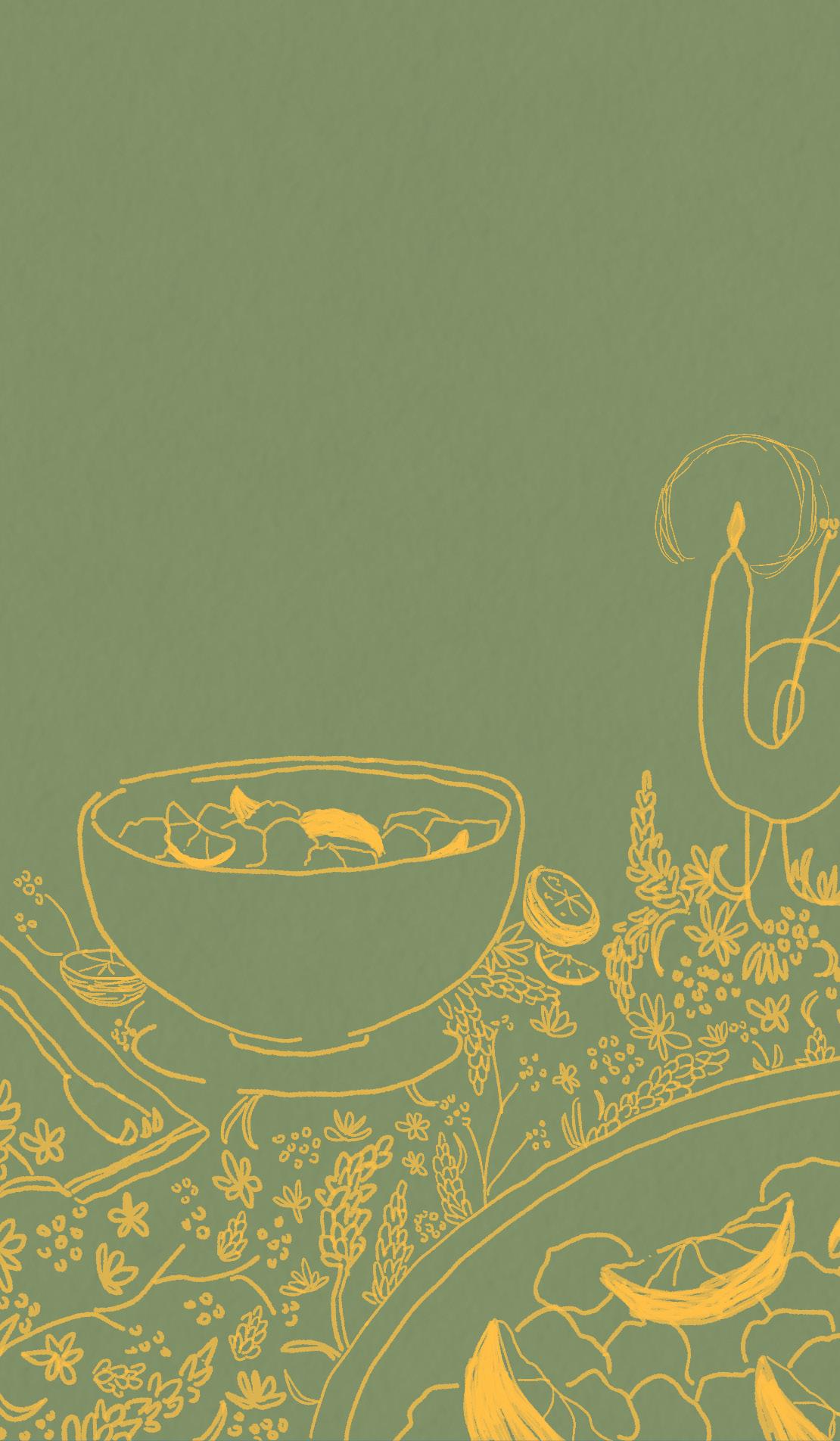

Tell me about yourself

An ambiguous statement that I’m never quite sure how to answer. Do you mean who I am in this moment specifcally, or one of the many people I’ve been over the years? One certainly informs the other, but it’s a tale that cannot be confned to 600 words.
I grew up in Listowel — now colloquially known as Letterkenny thanks to the popularity of local hero Jared Keeso’s TV show — a quaint rural community north of Waterloo. It was a place I never felt like I ft, so, in 2008, I took my fauxhawk and paper-clip earrings and promptly moved away. I went to j-school at Loyalist College in Belleville — around 30 of us started that year, and only nine graduated. We were the last cohort to make it through the rigorous print journalism program before it was scrapped, and by the time we stepped into the “real world,” newsrooms were downsizing across the country. I interned at the Chronicle Herald in Halifax, then decided to ride out the recession by getting my BA in English and art history at Carleton University.
My frst journo gig was at the Wellington Advertiser in Fergus, where I learned a lot about agriculture and municipal politics. Google “fufy cow” — you won’t be disappointed.
Afer a hangover-induced existential crisis on New Year’s Day 2015, I decided to take a job at Northern News Services in Yellowknife, NT. My frst day on the job, I was assigned a science story about how water contamination was changing the size of reproductive organs in male ninespine sticklebacks. I went back to my hotel room that
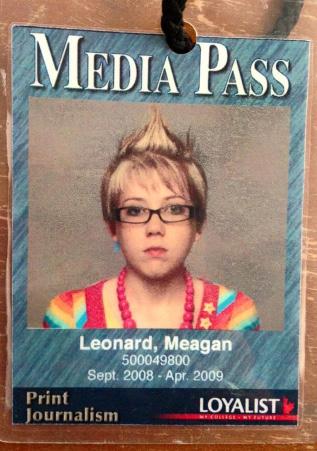
night and bawled, wondering if I had made a huge mistake. Yellowknife in February is not for the faint of heart.
Quite a few jokes were made at my expense when the stickleback story fnally went to print. (Spoiler alert: The reproductive organs increased in size.) But it got me over the fear of writing about unfamiliar topics. Soon afer they made me the business editor, and I spent the rest of my time up North writing about resource development.
Since then, I have primarily worked in education, as a literacy and basic skills practitioner and copy editor for a curriculum development project. The role of Executive Editor with Imprint feels like a natural next step, combining both of these career streams.
From food to cinema, music to cell phones, the opinions of others guide our choices. Although some instincts are natural, most of our decisions are infuenced by friends, family and the media. All of the millions of options we enjoy started from an opinion, be it the wars among nations or why we chose Waterloo. How ofen do we fnd ourselves pumped up and full of joy over a compliment? Or sad and hurt over a critique? How many times have we felt misunderstood or experienced the joy of being understood properly? No matter how far we travel with technology, the one thing human beings can and should never be beref of is opinions. Some might argue that opinions are upsetting and restrict our free will. However, from a business point of view, our ability to monetize opinions has helped corporations generate enormous wealth. Google ads is just one example. Society functions based on the idea that
Today, I am a single mom and life-long student. I enjoy alternative pop, a good IPA, and interpreting friends’ natal charts. Like a true journalist, I know a little bit about a lot of things and prefer to ask the questions, not answer them.
I believe storytelling should be a vehicle for growth — to help us learn about ourselves, understand history, and develop empathy for others. Too ofen, we forget to mind the gap between where we are and where we’d like to be. We neglect to celebrate how we got from there to here because it doesn’t seem all that remarkable. But real life happens in the nitty gritty — the ‘fex’ culture of social media only serves to hide the vulnerabilities that make us human and thereby make us ashamed of them. By sharing our stories of trial and error, mistakes and moments of self-doubt, we remind each other that life ebbs and fows in cycles. Small wins lead to big victories. Asking questions leads to new perspectives. Honesty leads to true connection.
In some ways, journalism has moved away from truth-telling and survived by fostering disparity and sensation. Though we may not see print newspapers around much longer, the tradition of telling stories will always be a source of real connection in an increasingly divided world. This is my goal as the new Executive Editor at Imprint — to create a community of authenticity, a space to share the perfectly imperfect stories of UW’s students in a way that supports and uplifs.
I look forward to continuing the conversation with all of you.
certain things are either good or bad, right or wrong. What is actually interesting is that these collective truths are nothing but opinions. What we believe in is defned by the way we have been raised combined with our environment. Take as an example religion. Religions defne the boundaries of righteousness, and some believe that stepping out of these boundaries can set of chaos and barbarism. This again is an opinion — one that is strong enough to become a belief system. A fair majority of things we believe in, and as an extension act upon, are the results of someone else’s opinions. As writer Jonathan Lethem says, “Nothing is original.” It is safe to presume that our perceptions are not necessarily original or, worse, true.
Now that we have identifed the positive and negative aspects of the nature of opinions, let us focus on how to deal with them. As students we have come across scenarios where we have been called all sorts of names. As traumatic as these experiences are, most

of us made it a point not to pay heed. Since we are all in a limbo with an infnite number of opinions on infnite topics, it only makes sense to try to make sense of those which really do matter. We can look at two diferent opinions as an example: frst being that I laugh diferently and I should correct that; and second, that I drive rash and should be mindful. It seems rational to pay much more attention to the opinion made on my driving skills than the other. Why? Purely because the stakes are higher.
It is a major mistake to immediately act afected by an opinion, irrespective of the urgency. Before reacting, we must think about the intent of the speaker. Any negative emotion, from anger to jealousy, all of these emotions ofen lead to biased opinions that end up hurting the receiver. In these situations, the most peaceful and healthy course of action is to let the opinion foat around the room, as random information for which their basis can later be questioned. The intention of the
speaker should be examined, and biases should not be neglected. Afer understanding the intention of the other person, if it is genuine and pure, the next step is to think backwards and search for the truth in their statement. However, if the intention is negative in any sense, the situation should be thought of as an argument with difering opinions which ofen lead to nowhere. I sincerely do not want anyone to neglect the opinions of others but this fltering and analysis is vital. Without this policing, self-improvement cannot be achieved; it just needs to be in a healthy manner. My point is that it is as important to selectively absorb opinions as it is to reject certain ones. However, this article is an opinion too. Choose wisely!
Wednesday, October 26, 2022 Vol. 46, No.6
Student Life Centre, Rm 0137
University of Waterloo Waterloo, Ontario N2L 3G1
P: 519.888.4048 | F: 519.884.7800
uwimprint.ca
Publisher: Andres Fuentes
Executive Editor: Meagan Leonard
Editorial Assistant: Alicia Wang
Sales Rep: Vacant
Distribution: Vacant
Volunteer Co-ordinator: Vacant
Editorial Staf
Managing Editor: Abhiraj Lamba
Creative Director: Sharanya Karkera
News Editor: Meghana Anthannagari
Assistant News Editor: Vacant
Arts & Life Editor: Remy Leigh
Assistant Arts & Life Editor: Nadia Khan
Science & Technology Editor: Nicole Howes
Assistant Science & Tech Editor: Khalid Safdar
Sports Editor: Avitej Singh
Satellite Campus Editor: Vacant
Opinions Editor: Charlie Dickson
Distractions Editor: Annie Zhang
Head Designer: Jia Chen
Assistant Head Designer: Mahnoor Irfan
Photo Editor: Andrew Yang
Assistant Photo Editor: Vacant
Graphics Editor: Heather Ecobichon
Assistant Graphics Editor: Vacant
Copy Editor: Eduardo Matzumiya
Assistant Copy Editor: Tanya Kathryn Leung
Video Editor: Andrew Yang Intern: Vacant
Imprint is the ofcial student newspaper of the University of Waterloo. It is an editorially independent newspaper published by the Federation of Students, University of Waterloo, carrying on business as the Waterloo Undergraduate Student Association (“WUSA”), a corporation without share capital. Imprint is a member of the Ontario Community Newspaper Association (OCNA). Content is provided for general information, education and entertainment purposes only, and does not necessarily refect the views of the Editorial Committee, WUSA, staf or advertisers. We welcome editorial submissions, articles, letters, photos and graphics (“Submissions”) for publication in any edition of Imprint, subject to terms and conditions for Submissions, which are available upon request. Imprint does not guarantee that Submissions will be published. Imprint reserves the right to approve and edit any Submissions to be published. A Submission will not be published if it is determined to be libelous or in contravention of Imprint’s policies, code of ethics and journalistic standards. Imprint may reproduce content, including Submissions, commercially in any format or medium. Imprint disclaims direct and indirect liability for reliance on or use of its content. Imprint is published every Friday during fall and winter terms, and every second Friday during the spring term. Imprint reserves the right to screen, edit and refuse advertising. One copy per customer. Imprint ISSN 0706-7380. Imprint CDN Pub Mail Product Sales Agreement no. 40065122.
Next scheduled pitch/post-mortem meeting: Oct 26. at 6:30 pm in SLC 0137
Everyone has a bad frst-year dorm experience, with many diferent factors as a possible cause. I live at REV; for me, it was the building itself…Ron Eydt Village, oh, how much I love that place.
When I frst received the email saying that I got REV as my dorm, I knew I was going to have a terrible experience. Every person that studied or is studying at UW had only bad things to say about that building. I saw pictures online, and it wasn’t too bad. I saw a few virtual tours on YouTube, and the building seemed okay — but then again, the video was posted on UW’s channel. As move-in day got closer, I tried to fnd the positive sides — many students didn’t get into campus housing, so they had to commute daily! I got lucky enough to get into campus housing, so I shouldn’t be complaining. But the second I walked into REV, I did a lot of complaining. It was scorching hot with no air conditioning, while we had to carry all our belongings up the narrow stairs as there was no elevator in the building. The room was so tiny that my roommate and I had to keep our mini fridges inside our closets. On move-in day, both our families kept bumping into each other and barely had space to walk through. The list of complaints kept growing daily with flthy showers, dirty sinks and dusty beds.
Let’s talk about my frst week at REV. Sneezing, crying, sneezing, that’s about it. Why do I hear so much about improvements at CMH or buildings that already look pretty when there’s no talk of improving the ugliest residence building at the university? They added a Booster Juice at CMH. Would it do any harm to add something new to REV?

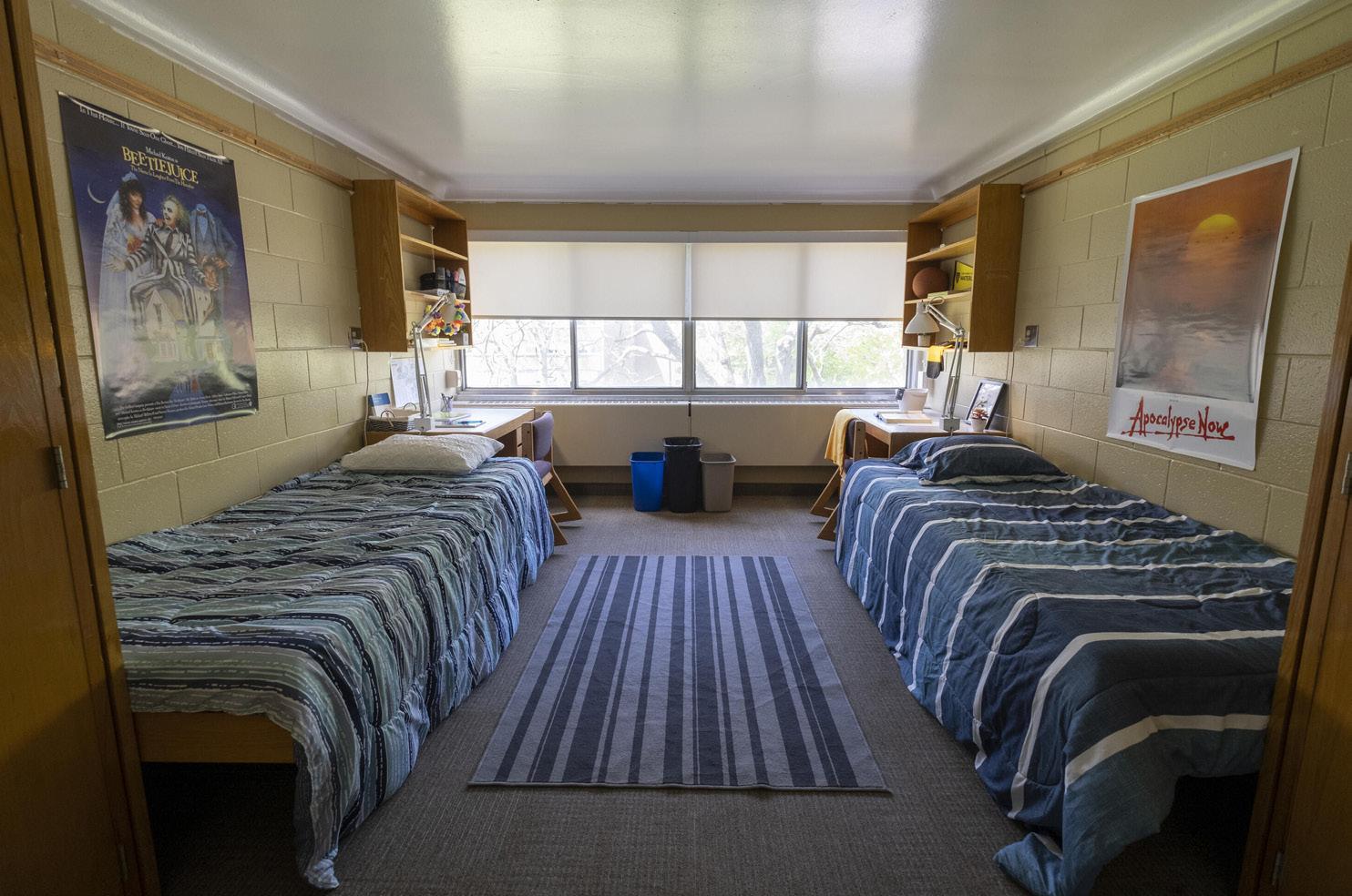
They made us rank our dorm choices when applying for campus housing, and REV was at the bottom of my list. What was the point in ranking my choices if, in the end, I got assigned to my LAST choice? I mentioned that I was a vegetarian, and they put me in a place that barely had vegetarian options. My class is a 25-minute walk from my building, all the good food places are on the other side of campus, and they all close by 6 p.m. I’ve made many friends who stay at REV, and they’re miserable — they also chose REV as their last option. The second we have an opportunity to return home, we take it. I would only stay here over the weekend if I had no other choice. The water pressure in our showers is
so low that by the end, I don’t feel like I’ve showered. At one point, I was very close to leaving REV behind to commute from Mississauga. I keep thinking about this, but unfortunately, it’s not really an option.
I promise you I haven’t exaggerated a single thing I mentioned about REV. I have made many attempts to leave the residence, but it’s been impossible. The University of Waterloo should really make improvements to that building — I don’t think they understand what students are struggling with.
Imprint acknowledges that the University of Waterloo is situated on the traditional territories of the Attawandaron (Neutral), Anishnaabeg, and Haudenosaunee Peoples. The University of Waterloo is situated on the Haldimand Tract, land promised to Six Nations, which includes six miles on each side of the Grand River. Therefore, Imprint recognizes and respects this land that it is situated upon.


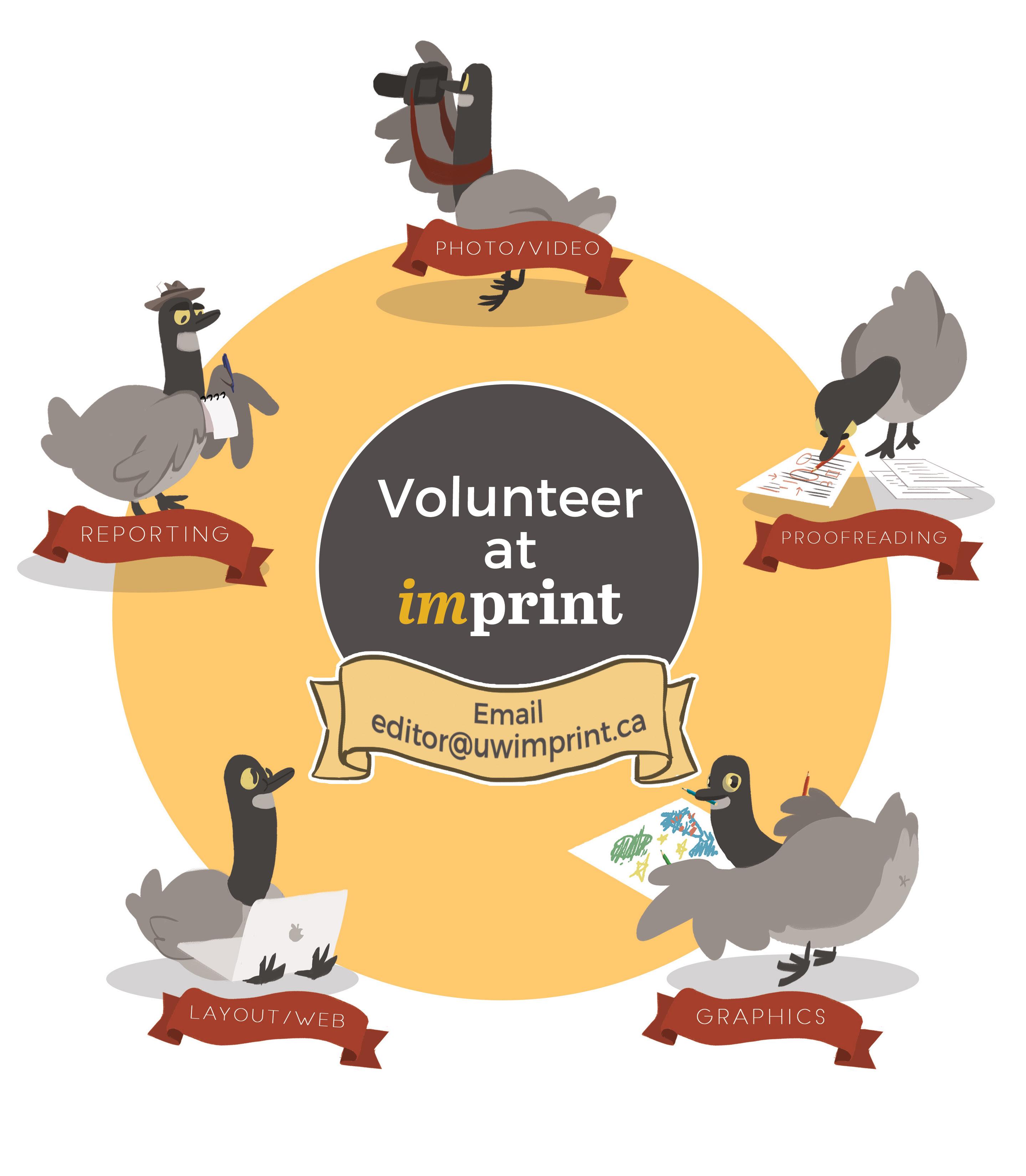



BARBIE
BIRTHDAY
BONFIRE
HALLOWEEN
HAPPY
HUMANS JAY MOD
NECOMANCER
NERF

Q: Why do ghosts choose Aviation at Waterloo?
A: Because they enjoy Fright School!


LAST WEEK’S ANSWERS
